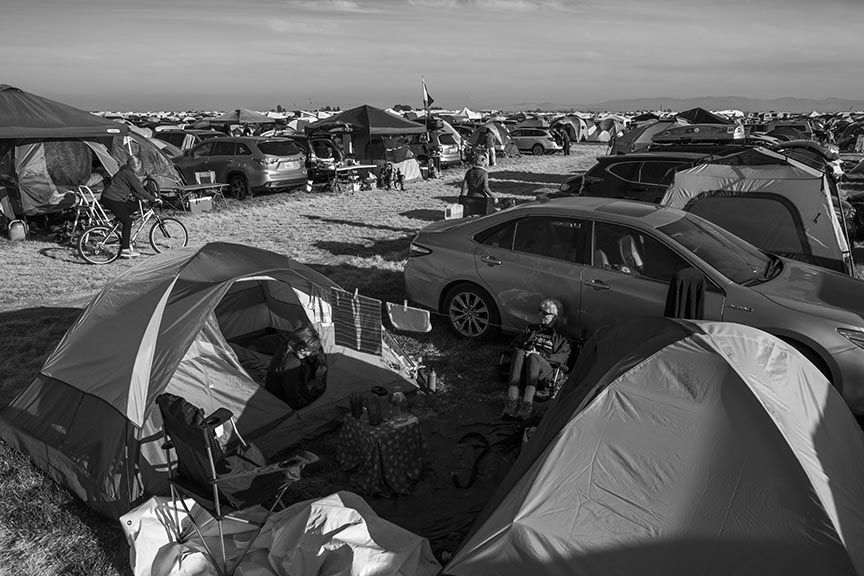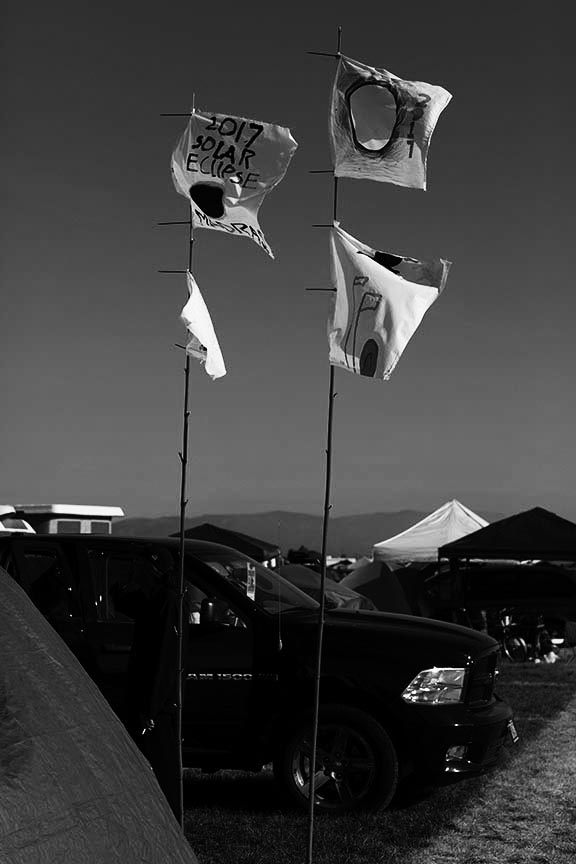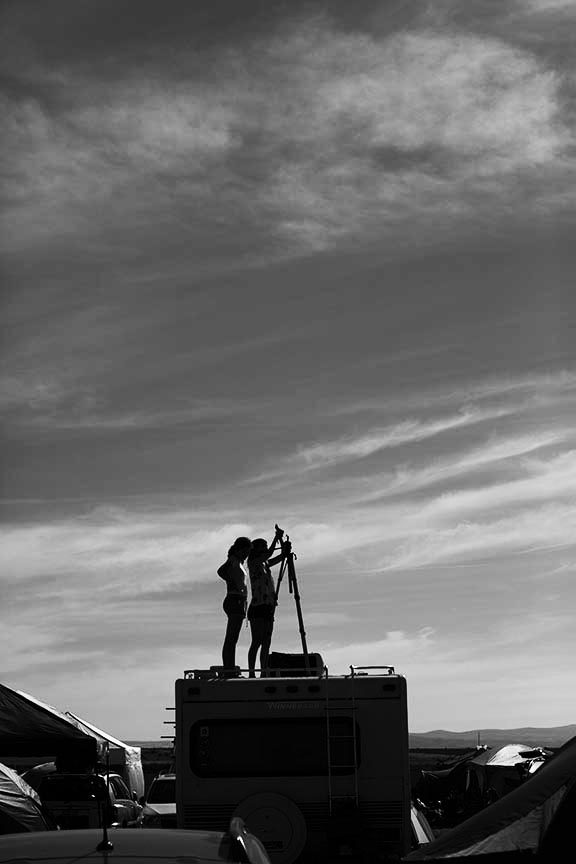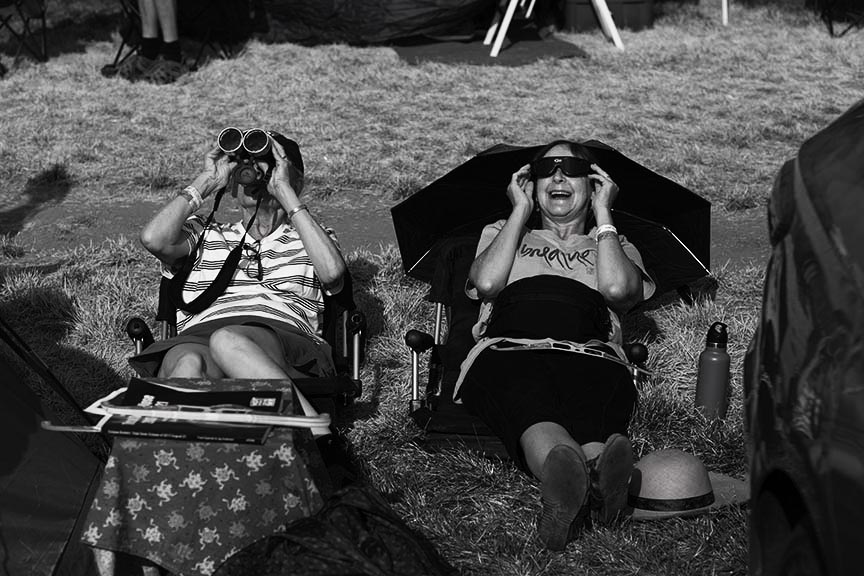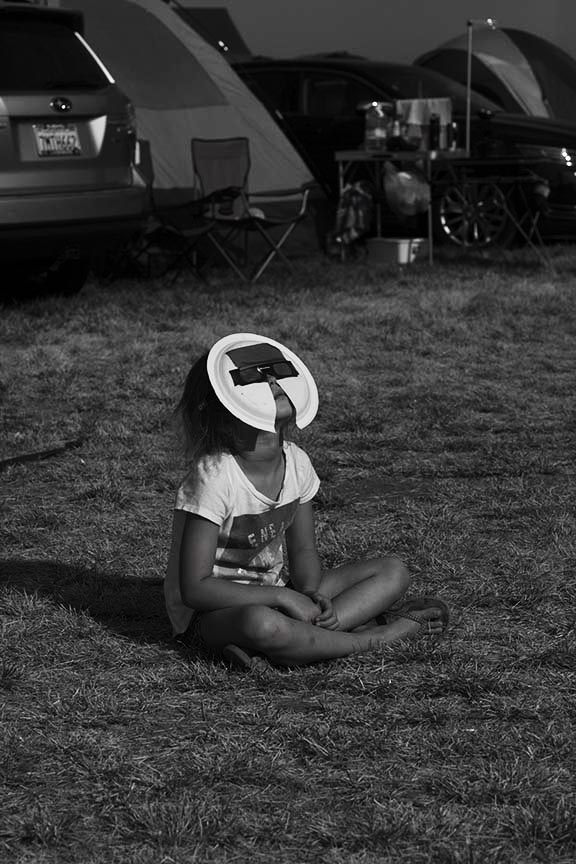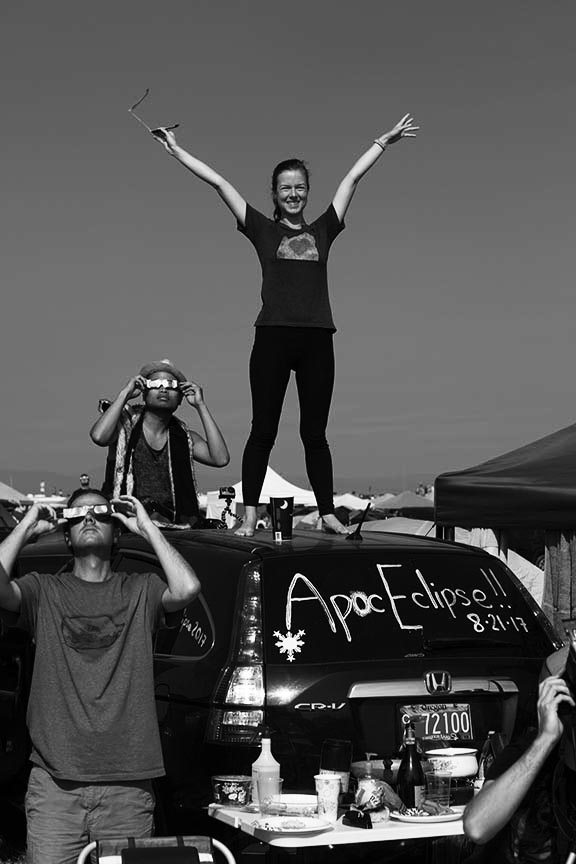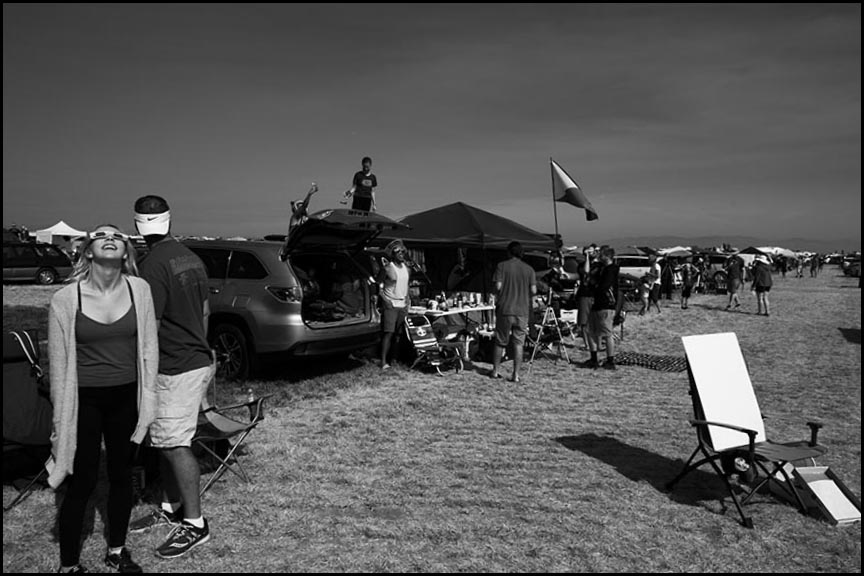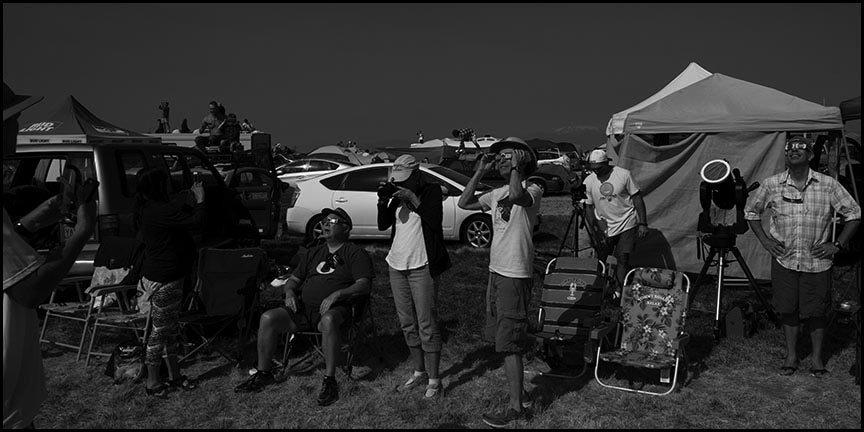The Delusion of Solar Eclipse Photography
21 August 2017
Madras, Oregon
Text and photos by Ed Hedemann
Pull quotes from friends who were totality first timers
Some are puzzled why anyone would go to such great lengths to stand in the shadow of the moon for all of two minutes (the shortest we've seen). Perhaps not so extreme this time, we flew from NYC to Portland then drove three hours through Mount Hood National Forest into the Oregon high desert and the town of Madras (pop. 6,000), which was inundated by more than 20,000 eclipse chasers.
Though this was my seventh — and Ruth's sixth — total solar eclipse trip and despite numerous similarities, each totality has been different. Notable about this one, for me, was the brilliant sparkly corona and chromosphere. Not at all as flat as I had remembered. But then again it's been eleven years so in the interim perhaps I've allowed photographs of totality — which are devoid of drama — to eat away at my memory of the reality.
![We left at 4 am to get as close as possible to the centerline of totality, and it was beyond worth it. ... [I]t's hard to understand how enormous the difference between 99.9% and totality is until you've seen it.](images/HH-quote.jpg) Sadly, visual images cannot convey the full spectacle, the anticipation, the rapid drop in temperature, the reaction of animals, the mysterious (and sometimes not seen) shadow bands, the whooshing approach of the moon's shadow, day breathtakingly turning into night, the appearance of stars and planets, gnarly orange prominences projecting from the sun's rim, the willowy curtain-like corona streaking far beyond the sun, and the surprisingly emotional shared experience.
Sadly, visual images cannot convey the full spectacle, the anticipation, the rapid drop in temperature, the reaction of animals, the mysterious (and sometimes not seen) shadow bands, the whooshing approach of the moon's shadow, day breathtakingly turning into night, the appearance of stars and planets, gnarly orange prominences projecting from the sun's rim, the willowy curtain-like corona streaking far beyond the sun, and the surprisingly emotional shared experience.
And when it was over, I didn't hear anyone complain "My, that was too long!" It's been said that no matter how long totality lasts — whether a minute, 2 minutes, 4 minutes, or 7 (the maximum possible) — it seems to have been only 8 seconds.
Photographs and videos of solar eclipses do a terrible injustice to the experience, the compulsion, of viewing totality live. Photographs are sadly feeble attempts to relay that experience. Partial eclipses further the injustice by persuading people who have never seen totality to think “So, what's the big deal?” and thus discouraging even crossing a street to see one.
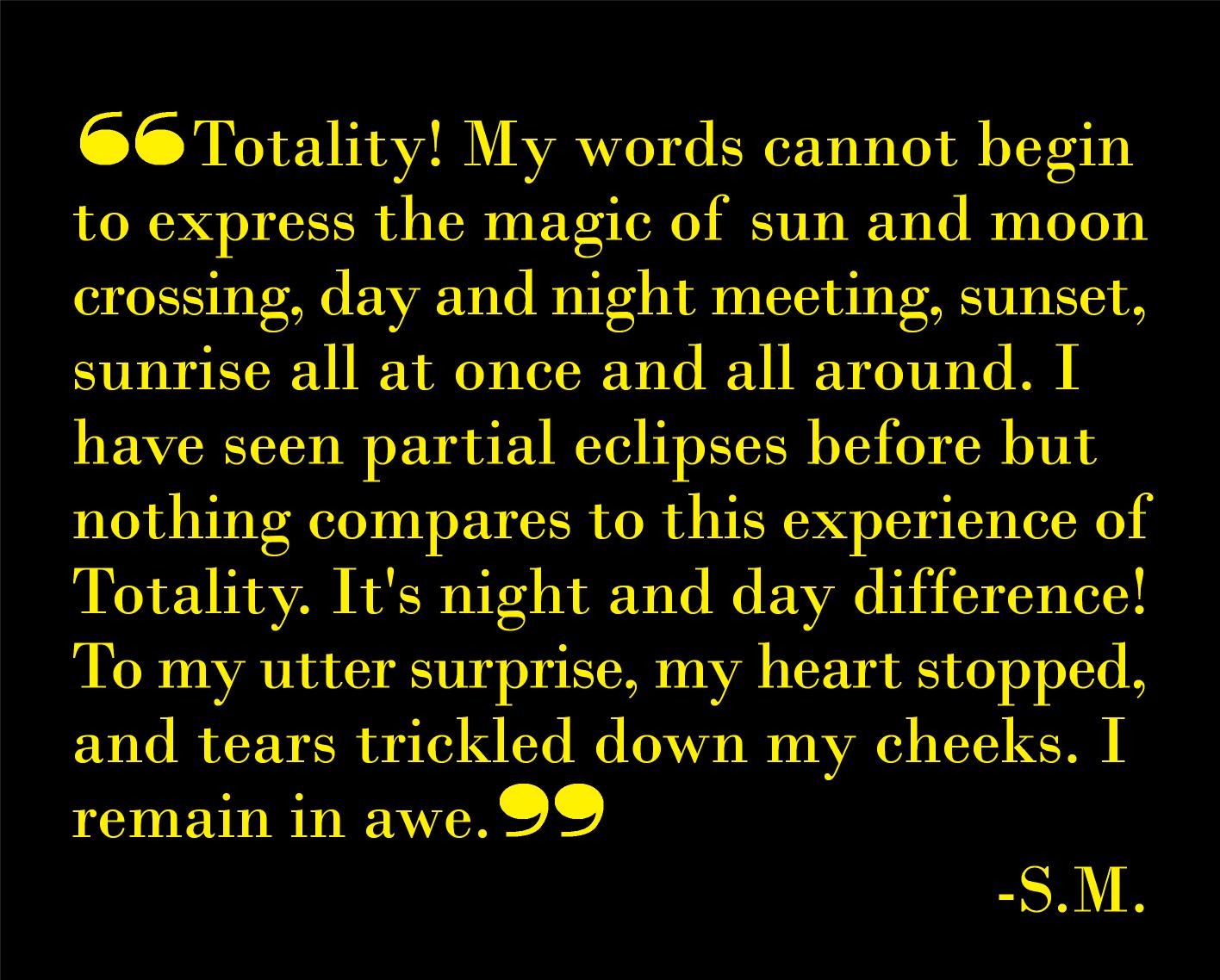 If you think you've seen a total solar eclipse, you haven't. If you think total solar eclipses are simply partial eclipses with benefits, you're wrong. If you think photographs and videos convey the experience, you're not even close. If you think your next chance at totality is 2024, you're remarkably patient. If you hate traveling and are waiting for a total eclipse to come to you — with the exceedingly rare lucky exceptions — you'll never ever see one in your lifetime.
If you think you've seen a total solar eclipse, you haven't. If you think total solar eclipses are simply partial eclipses with benefits, you're wrong. If you think photographs and videos convey the experience, you're not even close. If you think your next chance at totality is 2024, you're remarkably patient. If you hate traveling and are waiting for a total eclipse to come to you — with the exceedingly rare lucky exceptions — you'll never ever see one in your lifetime.
A Chicago friend, who has never witnessed a total eclipse, commented afterwards, “I have a nagging feeling that I am insufficiently interested in eclipses. Certainly, I was insufficiently prepared for this past one, not even having obtained a pair of eclipse glasses for it, and having had no strong impulse to go to Carbondale [Illinois] on the special train to see the total eclipse.”
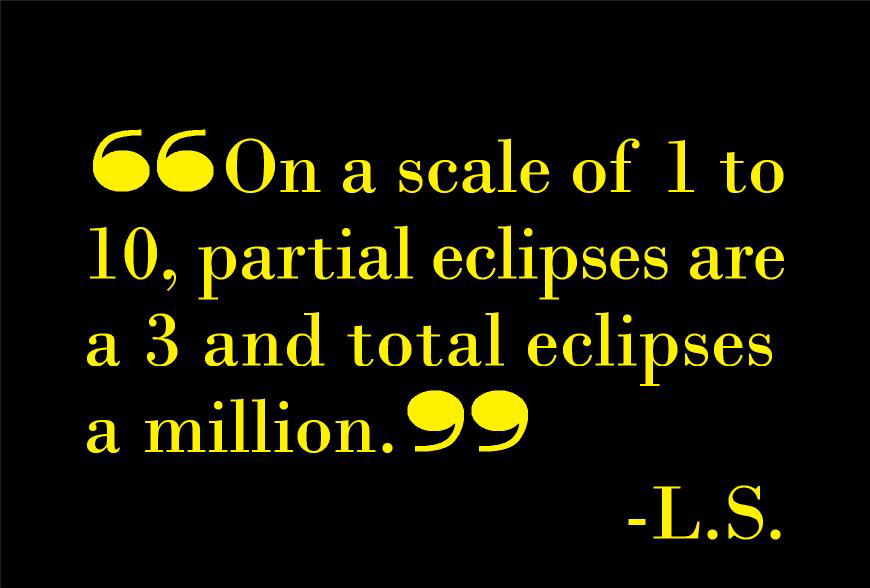 Veteran eclipse chaser Fred Espenak compares the experience of seeing a 99% partial eclipse versus totality to that of someone who's correctly guessed 5 of 6 numbers in a lottery (winning nothing) versus the person who's came up with all six correctly.
Veteran eclipse chaser Fred Espenak compares the experience of seeing a 99% partial eclipse versus totality to that of someone who's correctly guessed 5 of 6 numbers in a lottery (winning nothing) versus the person who's came up with all six correctly.
Often while looking at online collections of solar eclipse photos, you'll notice clever juxtapositions of a partially eclipsed sun with dramatic clouds, with buildings, with mountains or with silhouettes of people, birds, planes; projections through trees of solar crescents onto the ground; images of people watching eclipses through solar viewers or projected inside cardboard boxes, and so forth. But only a few, certainly not an overwhelming number, show photos of totality itself.
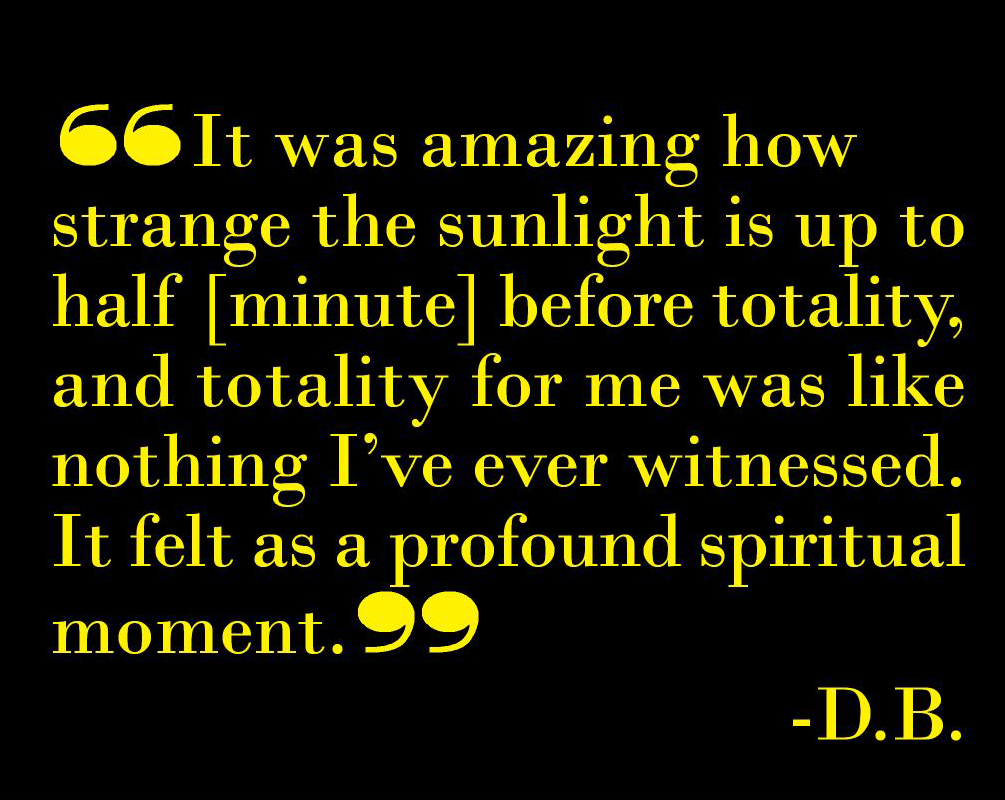 Why? Perhaps because there's only so many photos of the corona that most people will look at before becoming bored, succumbing to the ubiquitous what's-the-big-whoop affliction among those who've never seen a total solar eclipse.
Why? Perhaps because there's only so many photos of the corona that most people will look at before becoming bored, succumbing to the ubiquitous what's-the-big-whoop affliction among those who've never seen a total solar eclipse.
Also, despite popular misconceptions and some song lyrics, the only time the moon throws a shadow on the Earth is during a total solar eclipse, not a partial eclipse, not during a lunar eclipse, not at night when the moon is big and bright.
PREPARATION. The photos below show the set up in Solartown campsite in Madras, Oregon, where thousands of tents were pitched or RVs parked (click on images to enlarge):
TOTALITY. What follows are my deficient (sorry!) contributions to what's probably the most photographed and possibly most observed total solar eclipse in history. Aside for the first two images, what's displayed below can never be seen except during a total solar eclipse (click on images to enlarge):
| First contact, when the moon begins to cover the sun (at one o'clock position), 73 minutes before second contact (totality) when the sun's surface is completely covered by the moon. Note the sunspots. | 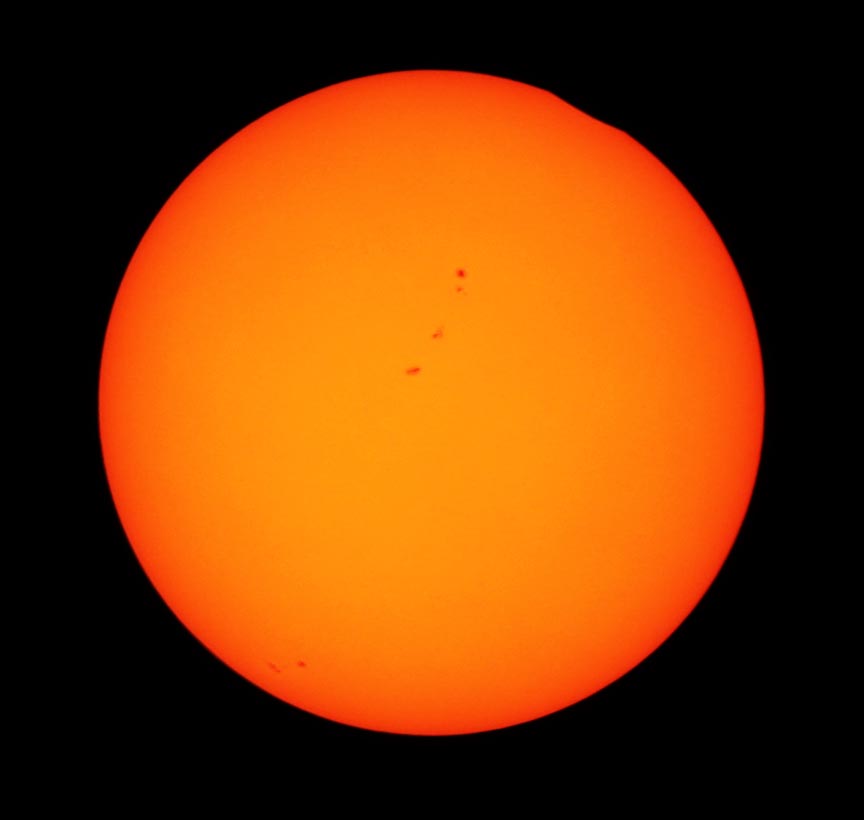 |
| This is what most people think of when they hear "solar eclipse," with little understanding the dramatic difference between a partial, which most have seen one time or another in their lives, and a total solar eclipse. | 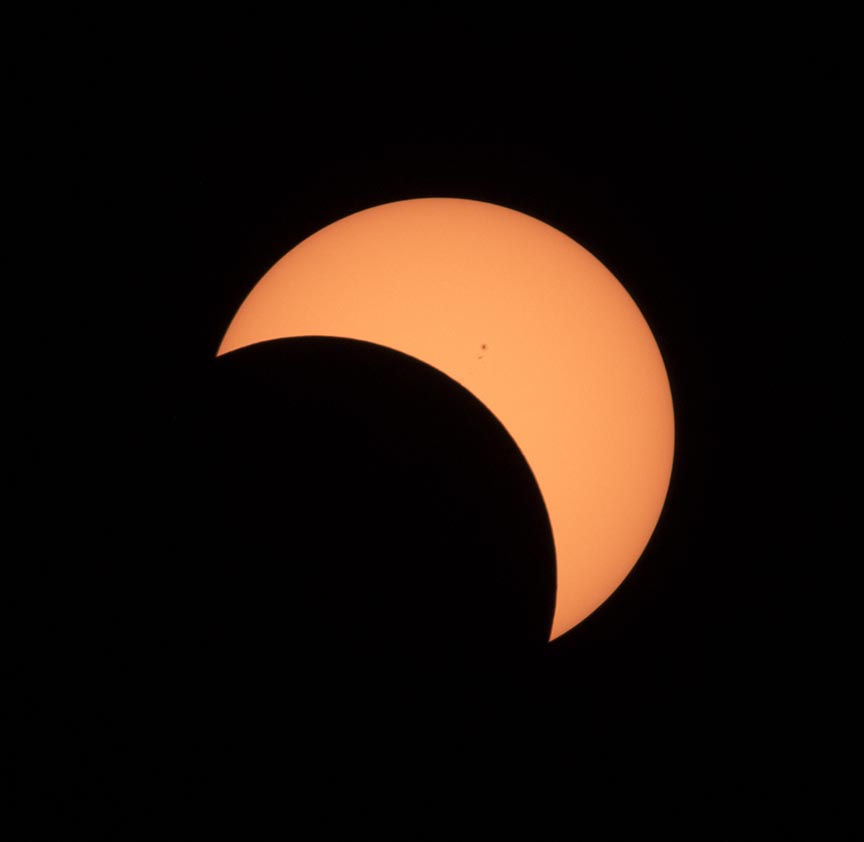 |
This shows the inner corona and some prominences. |
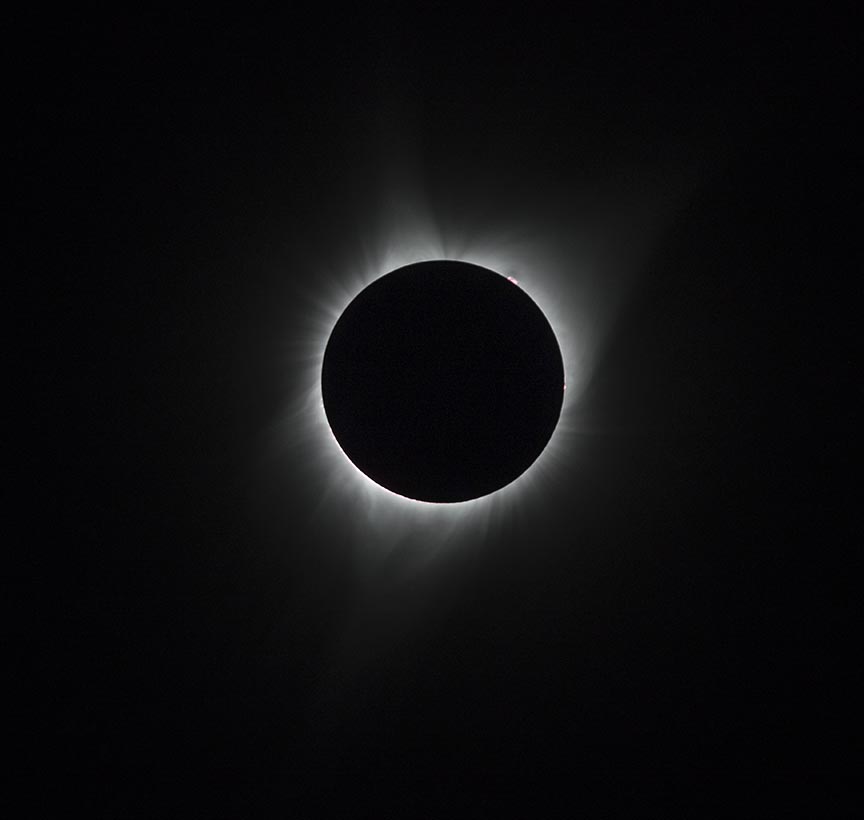 |
Close up of the orange prominences, which are much larger than the Earth, seen projecting beyond the sun's surface. |
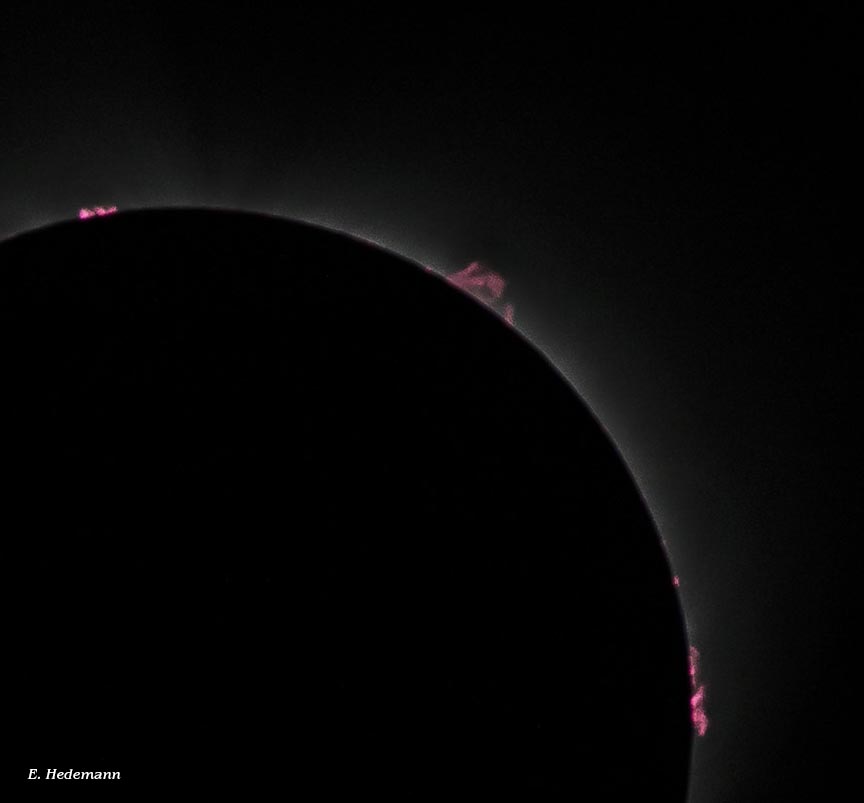 |
| Image of fuller corona. This and other photos were submitted to Eclipse Megamovie, a citizen science project composed of several thousand photographers all along the path of totality. | 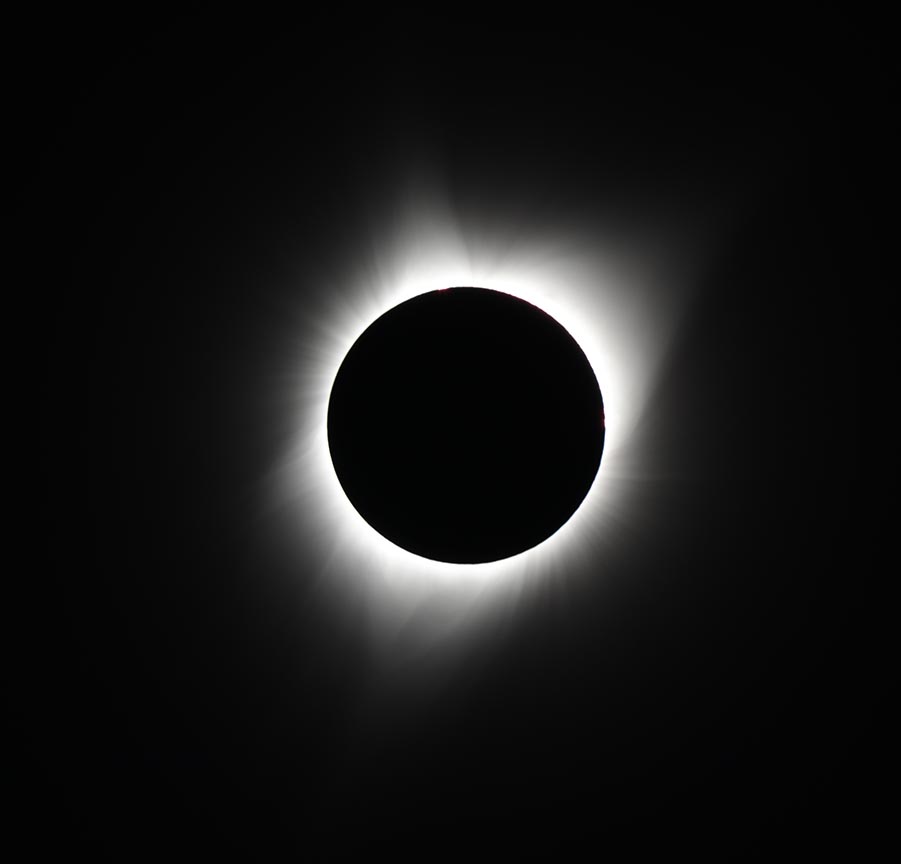 |
This is a composite of six images using different exposures taken mid-totality at virtually the same time combined in order to display the faint outer corona with the much brighter chromosphere. That speck in the lower left is Regulus, brightest star in the constellation Leo. |
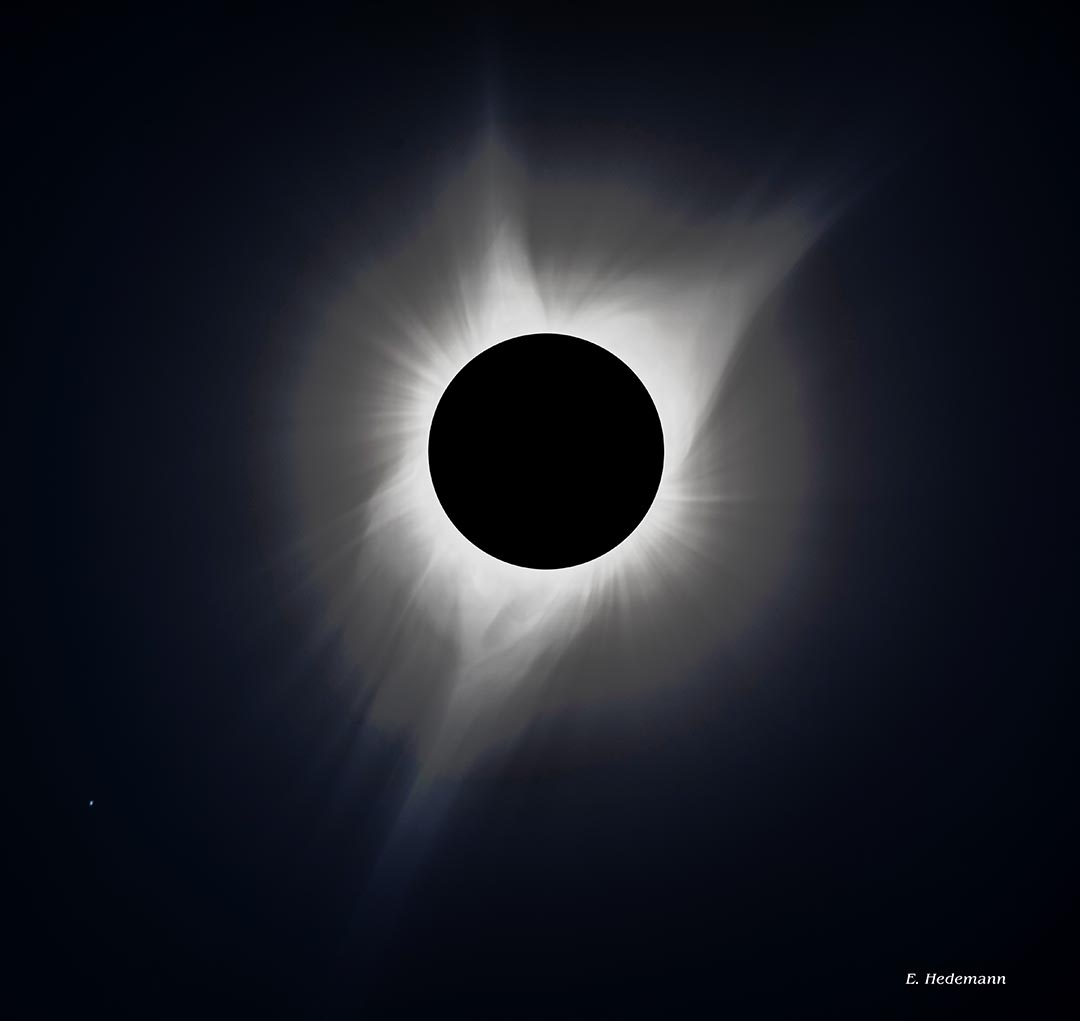 |
| An overexposed eclipse and underexposed foreground of eclipse watchers at their campsites during the height of totality. | 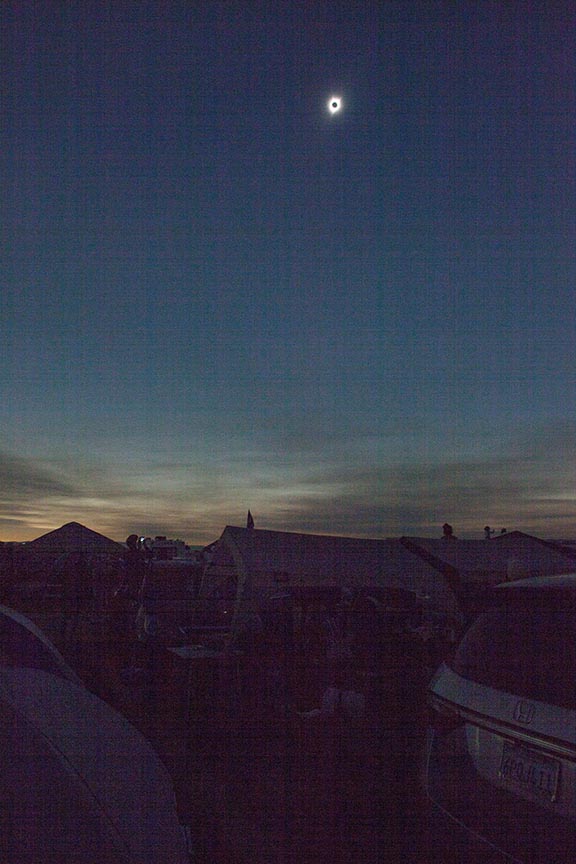 |
| The diamond ring effect just as totality ended (third contact). | 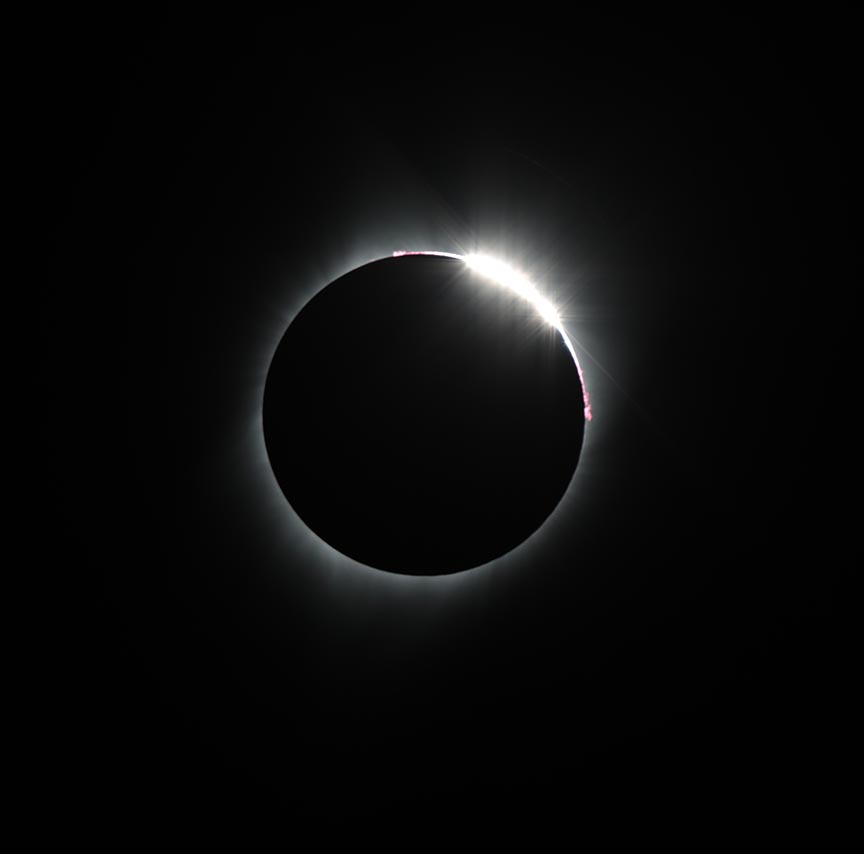 |
NEXT TOTAL SOLAR ECLIPSES
2019 July 2: South Pacific, Chile, Argentina; totality max 4m 33s
2020 Dec 14: South Pacific, Chile, Argentina, Atlantic; max 2m 10s
2021 Dec 4: Antarctica; max 1m 54s
2023 Apr 23: Indonesia, Australia, Papua New Guinea; max 1m 16s
2024 Apr 8: Mexico, United States, Canada; max 4m 28s
www.eclipsewar.net • ehedemann (at) hotmail.com
